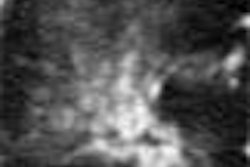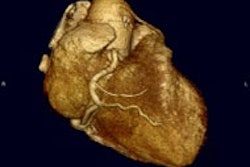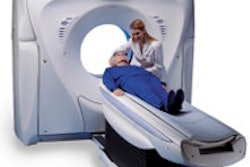The group that pioneered virtual bronchoscopy in the 1990s has taken a giant step into the future of lung imaging. Erik Hoffman, Ph.D. and his colleagues at the University of Iowa are leading a new five-year U.S. research effort to create a futuristic model of lung morphology and function.
Dear CT Insider,The group that pioneered virtual bronchoscopy in the 1990s has taken a giant step into the future of lung imaging. Erik Hoffman, Ph.D. and his colleagues at the University of Iowa are leading a new five-year U.S. research effort to create a futuristic model of lung morphology and function.
Part of the U.S. government's Human Genome Project, the lung atlas will help doctors detect lung disease sooner and more readily than existing methods, the researchers say. Hoffman and colleagues, along with five other U.S. research centers, are off to a good start as they work to fine-tune the methodology for creating a massive lung database and test lung function. The group has already deployed the data using molecular imaging techniques and texture analysis algorithms to assess everything from emphysema to regional ventilation.
Hoffman discussed the project at the 2003 Symposium for Multidetector-Row CT, and has provided CT insiders with some rather stunning images from the research. You'll find the article here, available today exclusively for CT Insider subscribers.
These days, of course, lung cancer assessment is a dominant force in CT research. And you'll find plenty of lung cancer research in our CT digital community. You might begin your tour with an orientation by Dr. David Yankelevitz from Cornell University, who discusses the happy dilemma of rising image quality in lung nodule assessment. The methods radiologists are developing to evaluate and treat the smallest lung abnormalities will have an important effect on the ability to cure early-stage lung cancers, Yankelevitz says in the article.
Today in the CT Digital Community you'll also find two new studies of interest to lung-cancer imagers. First, Dr. Gerald Antoch and colleagues from the University Hospital in Essen, Germany, weigh in with research on dual-modality PET/CT staging of non small-cell lung cancer. Substantiating the preliminary results of others, Antoch's group found that PET was superior for assessing mediastinal and hilar lymph node metastases, CT was better at detecting distant metastases, and that nothing was better than dual-modality images acquired together. Click here to find out more.
Finally, Dr. Jeffrey Port and colleagues from the Weill-Cornell Medical Center in New York City produced evidence -- long supported anecdotally -- that the actual size of tumors in patients with stage IA non-small cell lung cancer (NSCLC) is crucial to their long-term outcomes, a conclusion Dr. Yankelevitz would surely agree with. You'll find the rest of the story here.




















